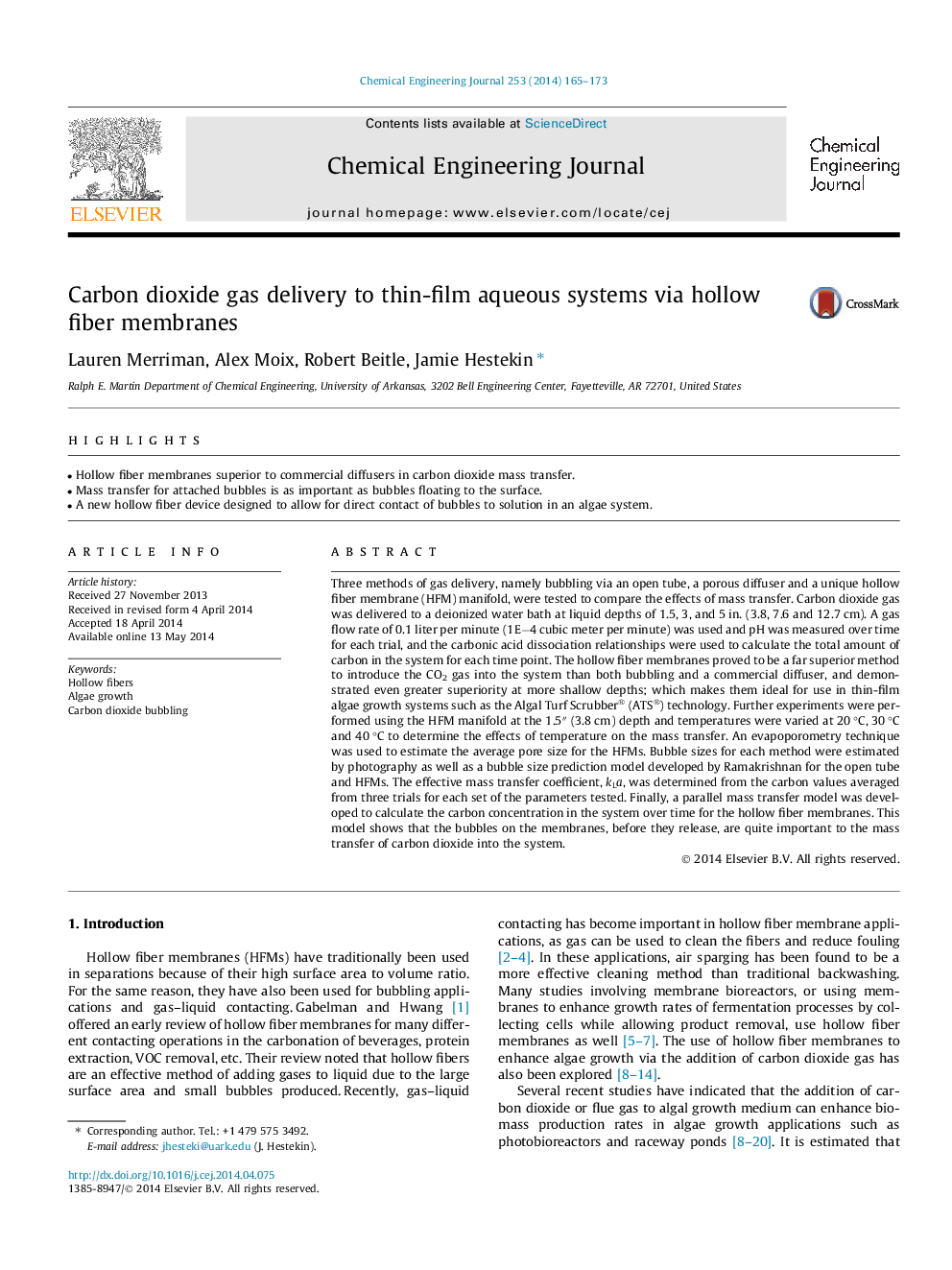| کد مقاله | کد نشریه | سال انتشار | مقاله انگلیسی | نسخه تمام متن |
|---|---|---|---|---|
| 147180 | 456387 | 2014 | 9 صفحه PDF | دانلود رایگان |
• Hollow fiber membranes superior to commercial diffusers in carbon dioxide mass transfer.
• Mass transfer for attached bubbles is as important as bubbles floating to the surface.
• A new hollow fiber device designed to allow for direct contact of bubbles to solution in an algae system.
Three methods of gas delivery, namely bubbling via an open tube, a porous diffuser and a unique hollow fiber membrane (HFM) manifold, were tested to compare the effects of mass transfer. Carbon dioxide gas was delivered to a deionized water bath at liquid depths of 1.5, 3, and 5 in. (3.8, 7.6 and 12.7 cm). A gas flow rate of 0.1 liter per minute (1E−4 cubic meter per minute) was used and pH was measured over time for each trial, and the carbonic acid dissociation relationships were used to calculate the total amount of carbon in the system for each time point. The hollow fiber membranes proved to be a far superior method to introduce the CO2 gas into the system than both bubbling and a commercial diffuser, and demonstrated even greater superiority at more shallow depths; which makes them ideal for use in thin-film algae growth systems such as the Algal Turf Scrubber® (ATS®) technology. Further experiments were performed using the HFM manifold at the 1.5″ (3.8 cm) depth and temperatures were varied at 20 °C, 30 °C and 40 °C to determine the effects of temperature on the mass transfer. An evapoporometry technique was used to estimate the average pore size for the HFMs. Bubble sizes for each method were estimated by photography as well as a bubble size prediction model developed by Ramakrishnan for the open tube and HFMs. The effective mass transfer coefficient, kLa, was determined from the carbon values averaged from three trials for each set of the parameters tested. Finally, a parallel mass transfer model was developed to calculate the carbon concentration in the system over time for the hollow fiber membranes. This model shows that the bubbles on the membranes, before they release, are quite important to the mass transfer of carbon dioxide into the system.
Journal: Chemical Engineering Journal - Volume 253, 1 October 2014, Pages 165–173
